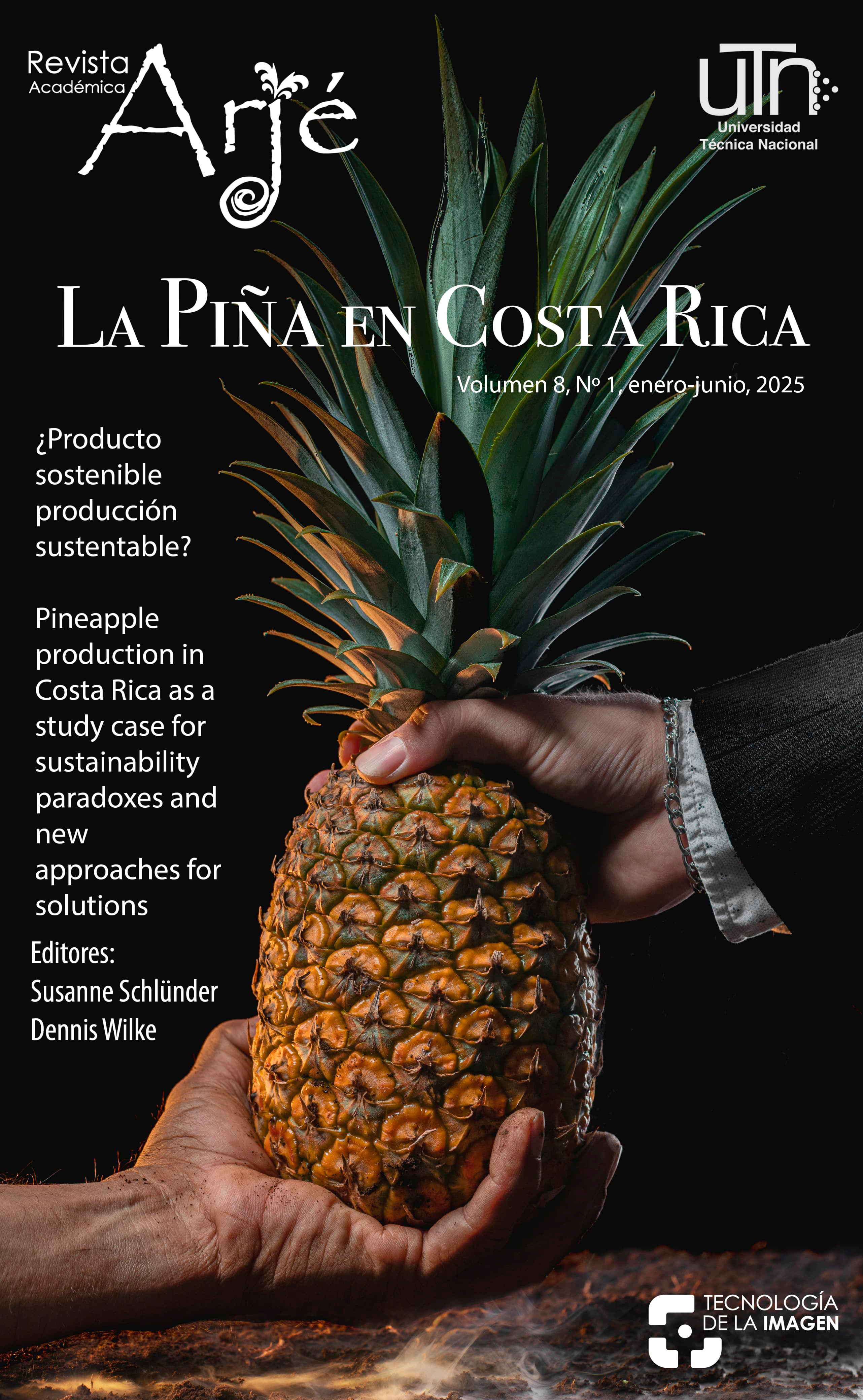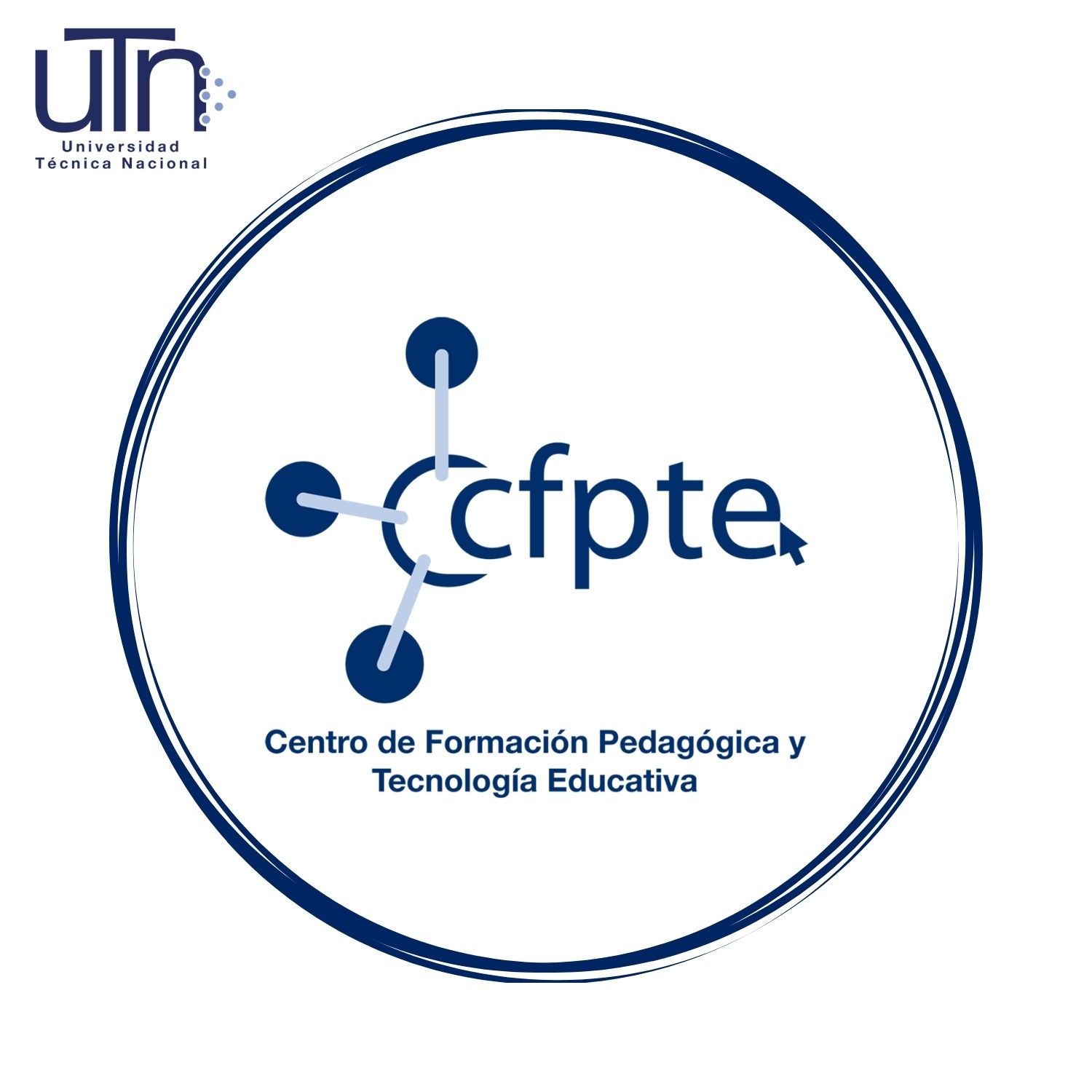Pineapple production and visions of regeneration– contrasting Costa Rican (agri)cultural paradigms
DOI:
https://doi.org/10.47633/2jxkvr72Keywords:
Costa Rica, Paradigms, Pineapple, Regeneration, Regenerative Agriculture, SustainabilityAbstract
In a time when agricultural developments have led to the transgression of multiple planetary boundaries like climate change and biodiversity loss, deeply-rooted transformations in the agricultural sector are urgently needed. Vice versa, those very developments have put many farmers’ livelihoods in danger around the world. In the Costa Rican context, the “Desarrollo Sostenible a la Tica” points to the country’s well-known “green” sectors, but this paradigm has also caused a stark breach between the green image conveyed (“exceptionalismo verde”, en. “green exceptionalism”) and the actual social-ecological livelihoods of many rural communities and the state of the landscapes. However, this is not the only paradigm of sustainable development prevalent in the country. Regenerative Development, a term most prominently used in the context of Regenerative Agriculture, offers an alternative vision for Costa Rica’s futures encompassing agricultural production and culture in general.
Following the stories shared by a diverse group of Costa Ricans interviewed on sustainable food systems and Regenerative Development, we drew a multifaceted picture of regeneration that includes both agricultural practices, as well as socio-cultural and relational dimensions. Referring to the power of paradigms as important scaffolds for people’s beliefs and decision-making in times of deep uncertainty, we thereafter compared the paradigm “Desarrollo Regenerativo” to the paradigm of “Desarrollo Sostenible a la Tica”. Putting these two paradigms in a dialogue, we delineated similarities and differences between them, to ultimately discuss possible ways forward: is there room for a (re-)conciliation and bridging of perspectives, or are the discrepancies between them too large, pointing to an unbridgeable gap and the need to fundamentally rethink the story of sustainable development the “Desarrollo Sostenible a la Tica” is currently telling? And what are potential implications for sustainable pineapple production?
Downloads
References
Burns, E. A. (2020). Thinking sociologically about regenerative agriculture. New Zealand Sociology, 35(2), 189–213.
Campbell, B. M., Beare, D. J., Bennett, E. M., Hall-Spencer, J. M., Ingram, J. S., Jaramillo, F., ... & Shindell, D. (2017). Agriculture production as a major driver of the Earth system exceeding planetary boundaries. Ecology and society, 22(4).
Costa Rica Regenerativa. (2021). Agricultura Regenerativa. Retrieved January 20, 2024, from https://www.costaricaregenerativa.org/agriculturaregenerativa
Cuadrado-Quesada, G. (2020). Realising the Human Right to Water in Costa Rica through Social Movements. Utrecht Law Review, 16(2), 96–109. https://doi.org/10.36633/ulr.561
EJAtlas. (2020). Plantaciones de piña en el humedal Térraba Sierpe, Costa Rica. https://ejatlas.org/conflict/pineapples-expansion-in-the-terraba-sierpe-wetland-costa-rica
European Alliance for Regenerative Agriculture (EARA). (2024). Towards a farmer-centric CAP rooted in Agroecosystem health. EARA. https://eara.farm/
Fischer, J., Farny, S., Abson, D. J., Zuin Zeidler, V., von Salisch, M., Schaltegger, S., ... & Kümmerer, K. (2024). Mainstreaming regenerative dynamics for sustainability. Nature Sustainability, 7(8), 964-972.
Halbe, J., & Janssen, C. (2023). Cross-cultural visions to explore pathways towards convergent development between the Global South and Global North. Unpublished manuscript. Osnabrück: Institute of Geography and Institute of Environmental Systems Research, Osnabrück University.
Halbe, J., Pahl-Wostl, C., Sendzimir, J., & Adamowski, J. (2013). Towards adaptive and integrated management paradigms to meet the challenges of water governance. Water Science and Technology, 67(11), 2651–2660. https://doi.org/10.2166/wst.2013.146
Humbert, F., & Braßel, F. (2016). Süße Früchte, bittere Wahrheit. Die Mitverantwortung deutscher Supermärkte für menschenunwürdige Zustände in der Ananas- und Bananenproduktion in Costa Rica und Ecuador. Oxfam Deutschland. Retrieved November 20, 2022, from http://web.archive.org/web/20250404192810/https://www.oxfam.de/system/files/20150530-oxfam-suesse-fruechte-bittere-wahrheit.pdf
León Araya, A. (2021). Agrarian extractivism and sustainable development: The politics of pineapple expansion in Costa Rica. In B. M. McKay, A. Alonso-Fradejas, & A. Ezquerro-Cañete (Eds.), Agrarian Extractivism in Latin America (pp. 99–116). Routledge.
Müller Castro, E. (2022). Regeneración, la esperanza para co-crear un futuro próspero y abuendante a favor de la vida. Revista REGENERATIO, 1(1), 7–13. https://doi.org/10.55924/ucireg.v1i1.13
Nygren, A. (1998). Environment as Discourse: Searching for Sustainable Development in Costa Rica. Environmental Values, 7(2), 201–222. https://doi.org/10.3197/096327198129341546
Paech, N. (2009). Grundzüge einer Postwachstumsökonomie. Postwachstumsoekonomie. http://www.postwachstumsoekonomie.de/material/grundzuege/
Pahl-Wostl, C., Jeffrey, P., Isendahl, N., & Brugnach, M. (2011). Maturing the New Water Management Paradigm: Progressing from Aspiration to Practice. Water Resources Management, 25(3), 837–856. https://doi.org/10.1007/s11269-010-9729-2
Pascual, U., Balvanera, P., Díaz, S., Pataki, G., Roth, E., Stenseke, M., ... & Yagi, N. (2017). Valuing nature’s contributions to people: the IPBES approach. Current opinion in environmental sustainability, 26, 7-16.
Pereira, L. M., Davies, K. K., den Belder, E., Ferrier, S., Karlsson-Vinkhuyzen, S., Kim, H., Kuiper, J. J., Okayasu, S., Palomo, M. G., Pereira, H. M., Peterson, G., Sathyapalan, J., Schoolenberg, M., Alkemade, R., Carvalho Ribeiro, S., Greenaway, A., Hauck, J., King, N., Lazarova, T., … Lundquist, C. J. (2020). Developing multiscale and integrative nature–people scenarios using the Nature Futures Framework. People and Nature, 2(4), 1172–1195. https://doi.org/10.1002/pan3.10146
Petschow, U., aus dem Moore, N., Pissarskoi, E., Korfhage, T., Lange, S., Schoofs, A., Hofmann, D., & Ott, H. (2018). Gesellschaftliches Wohlergehen innerhalb planetarer Grenzen: Der Ansatz einer vorsorgeorientierten Postwachstumsposition (No. UBA-Texte 89/2018). Umwelt Bundesamt. https://www.umweltbundesamt.de/sites/default/files/medien/1410/publikationen/uba_texte_89_2018_vorsorgeorientierte_postwachstumsposition_zusammenfassung.pdf
Richardson, K., Steffen, W., Lucht, W., Bendtsen, J., Cornell, S. E., Donges, J. F., ... & Rockström, J. (2023). Earth beyond six of nine planetary boundaries. Science advances, 9(37), eadh2458.
Schreefel, L., Schulte, R. P. O., de Boer, I. J. M., Schrijver, A. P., & van Zanten, H. H. E. (2020). Regenerative agriculture – the soil is the base. Global Food Security, 26, 100404. https://doi.org/10.1016/j.gfs.2020.100404
Therond, O., Duru, M., Roger-Estrade, J., & Richard, G. (2017). A new analytical framework of farming system and agriculture model diversities. A review. Agronomy for Sustainable Development, 37(3), 21. https://doi.org/10.1007/s13593-017-0429-7
Published
Issue
Section
License
Copyright (c) 2025 Luana Schwarz, Carolin Janssen, Johannes Halbe

This work is licensed under a Creative Commons Attribution-NonCommercial-ShareAlike 4.0 International License.
All articles in the Revista Académica Arjé are published under the Creative Commons Attribution-NonCommercial-ShareAlike 4.0 International License (CC BY-NC-SA 4.0).
This means that:
-
Attribution: Proper credit must be given to the original authors, a link to the license must be included, and any changes made must be indicated.
-
NonCommercial: The material may not be used for commercial purposes.
-
ShareAlike: If the work is adapted or remixed, the resulting version must be distributed under the same license.
More information at: https://creativecommons.org/licenses/by-nc-sa/4.0/deed.en











